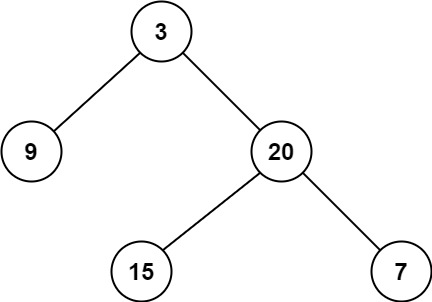English
111. Minimum Depth of Binary Tree 
Problem Statement:
Given a binary tree, find its minimum depth.
The minimum depth is the number of nodes along the shortest path from the root node down to the nearest leaf node.
Note: A leaf is a node with no children.
Example 1:

Input: root = [3,9,20,null,null,15,7]
Output: 2
Example 2:
Input: root = [2,null,3,null,4,null,5,null,6]
Output: 5
Constraints:
- The number of nodes in the tree is in the range [0, 105].
- -1000 <= Node.val <= 1000
Solution:
rs
impl Solution {
pub fn min_depth(root: Option<Rc<RefCell<TreeNode>>>) -> i32 {
match root {
Some(node) => {
let left = Self::min_depth(node.borrow().left.clone());
let right = Self::min_depth(node.borrow().right.clone());
if left == 0 || right == 0 {
left.max(right) + 1
} else {
left.min(right) + 1
}
}
None => 0,
}
}
}
java
import definitions.TreeNode;
public class MinDepthOfBinaryTree {
// Approach 1
public static int minDepth(TreeNode root) {
if (root == null)
return 0;
if (root.left == null && root.right == null)
return 1;
if (root.left == null)
return minDepth(root.right) + 1;
if (root.right == null)
return minDepth(root.left) + 1;
return Math.min(minDepth(root.left), minDepth(root.right)) + 1;
}
// Approach 2
int min = Integer.MAX_VALUE;
public int minDepth2(TreeNode root) {
if (root == null)
return 0;
minDepth2(root, 0);
return min;
}
public void minDepth2(TreeNode root, int level) {
if (root == null)
return;
level++;
if (root.left == null && root.right == null)
min = Math.min(min, level);
minDepth2(root.left, level);
minDepth2(root.right, level);
}
}
...
